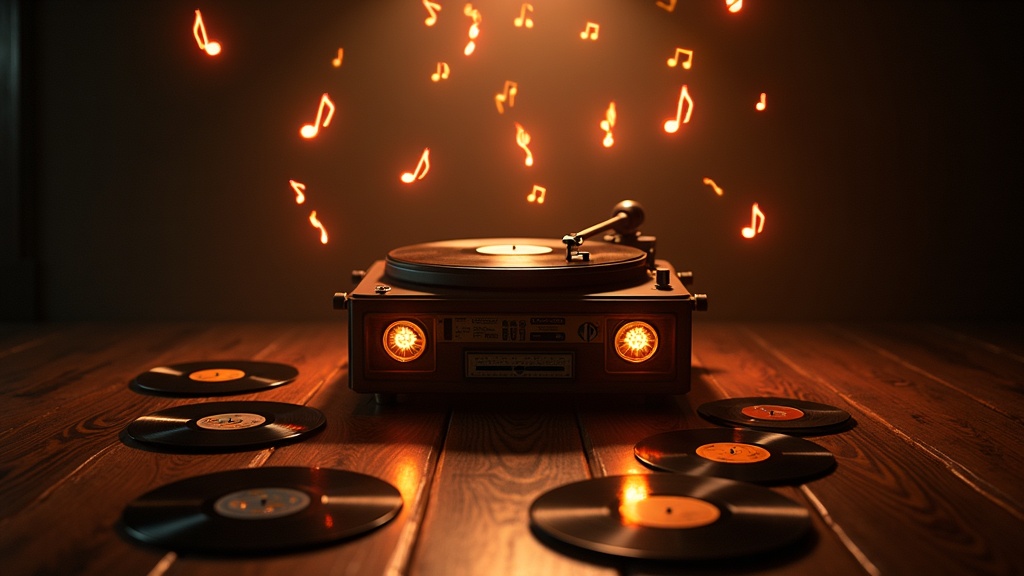If you’ve ever felt the thump of a rock and roll tune, you’re probably curious about where this wild musical ride started. Rock and roll wasn’t just an overnight craze. It drew energy from blues, gospel, rhythm and blues, and even country, turning into a movement that shaped modern music from the 1950s on. The early days had their fair share of experiments, trailblazers, and cultural breakthroughs. Here’s how the original pioneers of rock and roll music got the world dancing and changed sound forever.

Why the Pioneers of Rock and Roll Still Matter
Rock and roll started as more than a genre; it kicked off social changes and brought together diverse influences no one had mixed quite like this before. In the late 1940s and early 1950s, there was a big wave of innovation, with artists experimenting using electrified guitars, bold lyrics, and energetic rhythms.
These early musicians didn’t just make catchy tunes. They challenged social norms, broke racial barriers, and landed in the middle of the youth movement. The worldwide love for rock and roll now owes a lot to the energy and creativity of these founding figures. The sound, the attitude, and the style started during a time ripe for a shake-up in the music scene.
Knowing the roots of rock and roll makes the music easier to appreciate, even decades later. Today’s pop, alternative, punk, and indie genres all draw something from rock’s early innovators. Understanding these roots is pretty helpful for fans, musicians, and even casual listeners. Rock and roll’s original spark continues to pop up in new genres and modern music production, proving its staying power across decades.
The First Wave: Key Influences and Founding Sounds
Rock and roll’s early years were a melting pot of regional scenes, musical traditions, and fresh ideas. Here’s a look at the styles and communities that shaped its DNA:
- Blues and Rhythm & Blues: Electric guitar riffs and driving beats borrowed from African American artists brought the ‘roll’ to rock and roll.
- Country and Western: The twang and storytelling approach from Southern roots music blended smoothly with upbeat tempos.
- Gospel and Jazz Elements: Emotional vocal runs and call-and-response choruses added a deep, soulful touch.
Artists from different backgrounds started mixing and matching these elements, inspired by big city clubs, small radio stations, and even local dance halls. Their daring moves brought new life to the airwaves and invited more voices into the evolving sound of youth culture. Regional trends were then picked up by national radio shows, making it easy for diverse influences to fuse.
Major Trailblazers Who Defined Early Rock and Roll
The music icons who set the stage for everything that followed had really unique approaches and massive personalities. Here are a few of the legends who played especially big roles:
- Chuck Berry: Known for witty storytelling, guitar showmanship, and upbeat hits like “Johnny B. Goode,” Berry shaped what a rock and roll song could sound like—and what a rock guitarist could do on stage. His riffs and style still show up everywhere, from teenagers covering classics to big stadium bands.
- Little Richard: His piano pounding energy, high-pitched yells, and wild stage presence made every performance unforgettable. “Tutti Frutti” and “Long Tall Sally” turned heads for being bold in both sound and attitude. Little Richard’s influence reaches vocalists in genres way beyond just rock and roll.
- Elvis Presley: With a mix of rhythm and blues, country, and gospel, Elvis exploded into global fame in the mid-1950s. He didn’t just sing; he danced, connected, and got audiences’ hearts racing. His look, moves, and raw voice made him a sensation. Many still call him the “King of Rock and Roll.”
- Fats Domino: Bringing New Orleans flavor to piano-driven hits, Fats Domino charmed crowds with hits like “Ain’t That a Shame” and “Blueberry Hill.” His relaxed vocals and upbeat rhythms made rock and roll feel inviting and cool.
- Buddy Holly: Buddy’s songwriting knack, hiccuplike singing style, and playful approach on stage helped plant rock and roll firmly on the charts. With his band The Crickets, Holly wrote memorable songs like “That’ll Be the Day.” Plus, his ‘everyman’ style inspired countless kids to grab a guitar and start their own bands.
- Bo Diddley: Bo Diddley brought a unique, jungle beat rhythm and quirky guitar shapes to early rock and roll. His driving, heavily rhythmic guitar style, heard in songs like “Bo Diddley” and “Who Do You Love,” introduced new grooves that were quickly picked up by other rock performers around the world. Diddley was a major influence on later bands like The Rolling Stones and The Beatles, paving the way for what guitar-driven rock could become.
These artists didn’t just have chart-topping hits; they brought people together and shaped everything about the rock and roll scene from how artists played guitar to how teenagers dressed and danced. Their music and performances became templates for what made a star cool and iconic.
Big Changes That Rock and Roll Pioneers Let Loose
Pioneers of rock and roll weren’t just making noise; they helped spark cultural changes you can still see and hear today. Here’s how they stood out:
- Making Music Louder and Faster: Turning up amplifiers and speeding up tempos added a level of excitement that older swing and jazz just didn’t have. Big crowds, wild dance moves, and new trends all followed.
- Breaking Down Social Barriers: Early rock and roll brought Black and white musical traditions together, creating spaces where artists of different backgrounds could share their talents. Many pioneering stars faced resistance, but their success pushed American culture toward more integration onstage and in the audience.
- Starting the Teenager Revolution: Advertisers and media started seeing teenagers as their own group. This new sound gave young people a voice and a cool way to rebel from older generations’ stuffy standards. Artists also used lyrics to address teenage issues, making the music a soundtrack for growing up.
- Setting the Stage for Pop Stars: How artists performed, dressed, and acted became just as important as their music. The ‘rock star’ image grew out of the swagger, pompadours, costumes, and explosive performances the classic pioneers popularized. These trends inspired other genres and still show up in today’s concerts and fashion.
Lots of trends we now take for granted, like music videos, stadium concerts, and fan clubs, can be traced back to the buzz and creativity of this era. The original rock and roll boom inspired waves of aspiring musicians to make their own bands and step into the spotlight.
What to Listen For: Spotting Classic Rock and Roll Sounds
The early songs stand out with their upbeat rhythms, energetic vocals, and catchy melodies. Here are a few features that define that era’s records:
- 12-Bar Blues Progression: Many hits started with a simple chord pattern borrowed from the blues. It’s familiar, easy to dance to, and totally infectious.
- Snappy Drums and Backbeat: Drummers emphasized the second and fourth beats of the measure, which gave rock and roll its punch and swing.
- Guitar Solos and Riffs: Guitars took center stage, thanks to electrification. Artists like Chuck Berry used signature riffs as catchy hooks you could hum.
- Call and Response Vocals: A lot of singers and bands echoed gospel roots by trading lines or shouts between the lead and the background singers.
If you listen closely to classic rock and roll, you’ll hear a generous dose of echoey vocals, upright bass, simple harmonies, and handclaps that pull everyone in. These sounds not only make the songs memorable but are still emulated by current artists looking to channel that energy.
Keeping the Rock and Roll Spirit Alive
If you’re looking to understand or get inspired by rock’s pioneers, listening to their recordings is the best place to start. Here are a few handy ways to fall deeper in love with the originals:
- Stream or catch a documentary about the classic artists. Plenty of films and interviews share cool behind-the-scenes moments.
- Check out classic albums, not just the hit singles. There’s a lot of energy and rawness in tracks that never got radio play.
- Read about the historic venues and moments, like the Apollo Theater or the Sun Records sessions. Learn how these places put the spotlight on fresh talent and unforgettable jams.
- Try covering a classic tune on an instrument or singing along with the big hooks; there’s something pretty special about feeling those rhythms firsthand.
It’s also worth learning about the ways later generations borrowed these sounds. From the British Invasion bands to punk groups and modern indie musicians, the roots planted by early pioneers keep growing strong. The enduring popularity of tribute concerts and rock-themed festivals show that the genre’s origins remain compelling to music lovers of all ages.
Frequently Asked Questions
Question: Who are three key pioneers of rock and roll?
Answer: Chuck Berry, Little Richard, and Elvis Presley are three names you’ll hear again and again. Each added a unique spark: Berry with his guitar licks, Little Richard with his wild performances, and Elvis with his genre-mixing and superstar presence.
Question: What did rock and roll change about popular music?
Answer: It made music more energetic, gave the youth a bigger voice, and blurred longstanding lines between musical genres and audiences. It also inspired the rise of the “pop star.” Rock and roll helped create a climate where musical creativity could thrive and musical boundaries could be crossed with ease.
Question: Where did the first rock and roll songs come from?
Answer: The first recognizable rock and roll songs came from regions like the Mississippi Delta, Memphis, and cities like Chicago and New Orleans. Each place added its own twist, whether bluesy, jazzy, or country influenced.
Experiencing Early Rock and Roll Today
You don’t need a time machine to get a feel for the roots of rock and roll. Whether you’re spinning actual records, streaming playlists, or watching older performance clips online, the spirit and energy of those original tunes jump right out of the speakers. A visit to a museum like the Rock & Roll Hall of Fame or a quick dip into a retro playlist can recharge your appreciation for how creative and bold the very first rockers were. Connecting with the legacy of these pioneers can make you hear today’s music with fresh ears.
The relentless drive and attitude of the genre’s pioneers inspired whole generations, and still fuel the desire to pick up an instrument or start a band. Their trailblazing moves keep influencing music, style, and attitude in ways that reach far outside the world of rock and roll. Wrapping up, early rock and roll’s impact goes way beyond catchy melodies; it opened up a space for innovation, self-expression, and connection that still resonates globally. The next time you hear that classic riff or backbeat, you’re listening to a spark that set off a musical revolution and continues to inspire in fresh, exciting ways.
